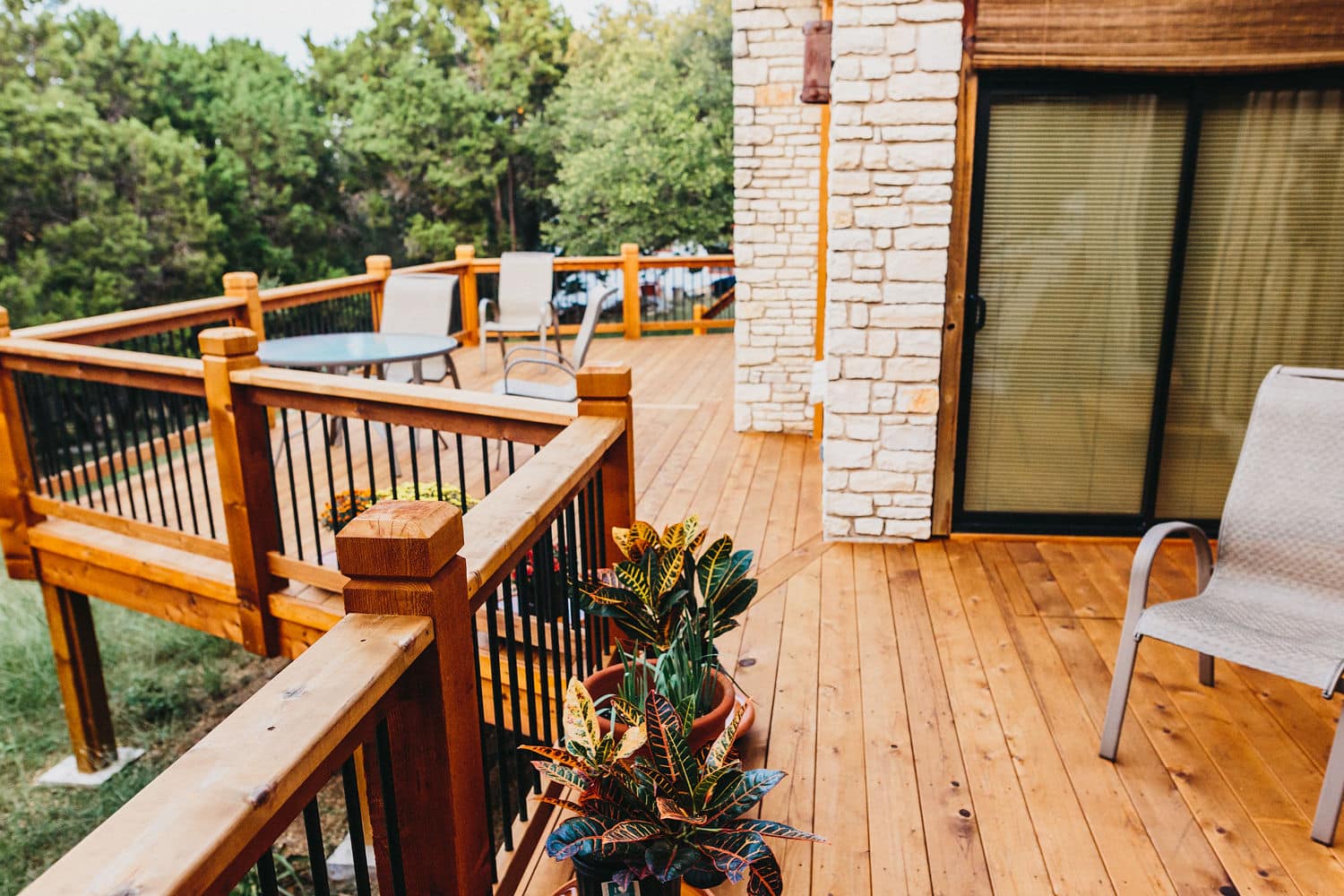18 Dog Fence Ideas: Styles & Solutions for Every Yard & Every Dog
If you own a dog, a fenced-in backyard is a must to give your…

Warmer weather is near and that means you’re about to be spending a lot more time outside on your deck. Before you start planning for your first summer barbeque, it’s essential to check your deck for common wear and tear that can cause injuries.
Follow our deck safety checklist below and you’ll be safely enjoying your deck in no time.
The ledger board helps support the weight of the deck and the people on it, so it’s essential to make sure it is secured to the house. Common issues you might see if your ledger board was improperly installed is a widening gap between the house and the deck. If you’re seeing this, make sure to tighten the bolts that are attaching the two together. You will also want to double check that it was installed with screws and bolts, as opposed to nails, so you can confidently know it will support the total weight.
Flashing can be one of the most important aspects of an outdoor deck if your deck is on the second-story and your home has siding. Flashing is important in these situations because it is the waterproof material that connects your deck to your home. Without flashing, water could seep in and erode the wood of your house, which can obviously cause long term safety and health issues. Often, issues with flashing occur due to improper installation or deterioration. To check the integrity of your flashing, ensure there hasn’t been a build up of moisture causing rot and that all of the caulking is still in place maintaining its waterproof capabilities. Luckily, if your deck is on the first floor of your home, you don’t have to worry about this step!
Has the integrity of your deck wood been maintained? At this point in the deck safety check, take a look at the actual wood that composes your deck. You will want to inspect the wood for rot by attempting to insert a screwdriver or ice pick in between the planks. If the screwdriver goes into the wood by more than ¼ of an inch, or if the wood feels spongy, chances are there is rot. You will also want to look out for termite holes and other signs of insect infestations and address those immediately before they spread.
Metal can rust and experience wear and tear, so it’s important to take a look at all of your deck fasteners. This is a crucial step in your deck safety check because the fasteners are literally what is holding your deck together. If you see rust, loose fasteners or the lack of fasteners, get them repaired right away!
Of course you want to make sure that your deck is properly supported by double checking the integrity of the wooden support posts. You want them to be straight, as opposed to bowed and you want to ensure the wood is still in good shape and not rotting, or distressed. The last thing you would want would be for your deck to collapse!
Not all decks have stairs and railings, but if your deck does, give them a once over for loose connections, gaps or splintering and damaged wood. Place your weight on the stairs or railings to make sure there is no movement underneath you and that they feel sturdy. If you feel insecure in their stability, add their repairs to your list.
Now that you’ve thoroughly gone through your deck, you can rest assured that it will be safe for your family and friends to enjoy. If during your safety check you noticed any compromising issues, give our deck builders a call today to put it back into top shape!